Aloeides kaplani, the Kaplan's copper, is a species of butterfly in the family Lycaenidae. It is endemic to South Africa, where it is known from the Western Cape. It was discovered and described in 1977.
Aloeides lutescens, the Worcester copper, is a species of butterfly in the family Lycaenidae. It is endemic to South Africa, where it is known from sandy flats along the Breede River in the Worcester area and the Robertson Karoo in the West Cape.
Aloeides merces, the Wakkerstroom copper, is a species of butterfly in the family Lycaenidae. It is endemic to South Africa, where it is known from sour montane grassveld in KwaZulu-Natal and Mpumalanga.
Aloeides nubilus, the cloud copper, is a species of butterfly in the family Lycaenidae. It is endemic to South Africa, where it is found on low rocky ridges in the Mpumalanga Drakensberg.
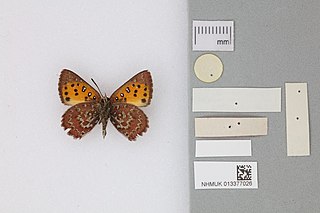
Aloeides rossouwi, the Rossouw's copper, is a species of butterfly in the family Lycaenidae. It is endemic to South Africa, where it is found in Mpumalanga south of the Stoffberg.
Aloeides rileyi, the Riley's copper, is a butterfly of the family Lycaenidae. It is found in South Africa, where it is known from Lesotho and the eastern part of the Free State.
Aloeides braueri, the Brauer's copper, is a butterfly of the family Lycaenidae. It is found in South Africa, where it is known from highland hillsides covered in sour grassveld in the Eastern Cape.
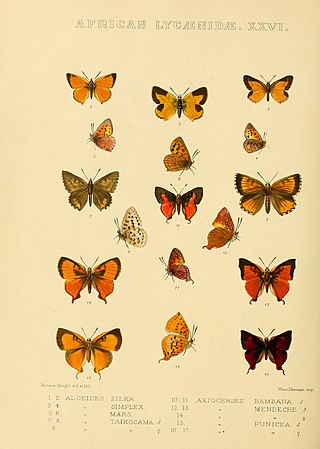
Aloeides simplex, the dune copper, is a butterfly of the family Lycaenidae. It is found in South Africa, where it is known from sandy areas in the Kalahari and arid savannah, the red dunes from Kuruman, Hotazel and further west in the Northern Cape.
Aloeides caffrariae, the border copper, is a butterfly of the family Lycaenidae. It is found in South Africa, where it is known from coastal grassland in the Eastern Cape.

Aloeides monticola, the Cederberg copper, is a butterfly of the family Lycaenidae. It is found in South Africa, where it is known from the high slopes of the Cederberg in the Western Cape.
Aloeides depicta, the depicta copper, is a butterfly of the family Lycaenidae. It is found in South Africa, where it is known from fynbos and Nama Karoo along the mountains from Matjiesfontein to Gydo Mountain and the Eastern Cape.
Aloeides clarki, the Coega copper, is a butterfly of the family Lycaenidae. It is found in South Africa, where it is known from low slopes and ridges in coastal Karoo flats in the Eastern Cape and flat rocky land further inland.

Aloeides arida, the arid copper, is a butterfly of the family Lycaenidae. It is found in South Africa, where it is known from the northern Western Cape to Springbok and Steinkopf in the Northern Cape.

Aloeides aranda, the Aranda copper, is a butterfly of the family Lycaenidae. It is found in the whole of South Africa, except in high montane forests and arid western areas. It is also found in Zimbabwe.
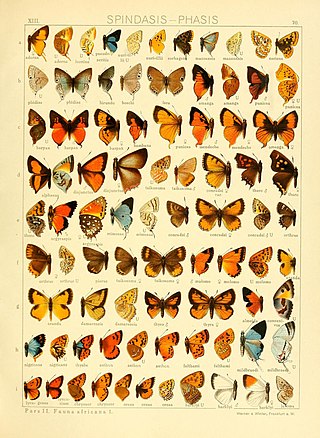
Aloeides almeida, the Almeida copper, is a butterfly of the family Lycaenidae. It is found in South Africa, where it is known from the Western Cape and the Cape Peninsula and the main Cape Fold Mountains, north to Ceres and east along the mountain ranges to the Eastern Cape.
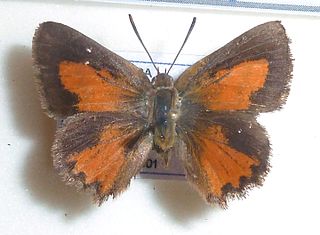
Aloeides henningi, the Henning's copper, is a butterfly of the family Lycaenidae. It is found in South Africa, where it is found from the northern Eastern Cape to Lesotho, western KwaZulu-Natal, the eastern Free State, Mpumalanga, Limpopo and Gauteng.
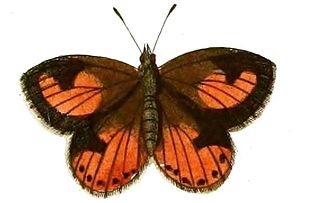
Aloeides pierus, the dull copper, is a butterfly of the family Lycaenidae. It is found in South Africa, where it is found in the Western, Northern and Eastern Cape, as well as the Free State.

Aloeides swanepoeli, the Swanepoel's copper, is a butterfly of the family Lycaenidae. It is found in South Africa, where it is found from coastal KwaZulu-Natal to the Drakensberg, north into Mpumalanga and Limpopo.

Aloeides taikosama, the dusky copper, is a butterfly of the family Lycaenidae. It is found in South Africa, Botswana, Lesotho, Mozambique and Zimbabwe. In South Africa it is found from the eastern Western Cape to the Eastern Cape, the Free State, northern KwaZulu-Natal, Gauteng, Mpumalanga, Limpopo, North West and the eastern Northern Cape.

Aloeides barklyi, the Barkly's copper, is a butterfly of the family Lycaenidae. It is found in South Africa, where it is found in the Northern Cape, south to the Western Cape, the Cederberg and the Name Karoo at Matjiesfontein.











